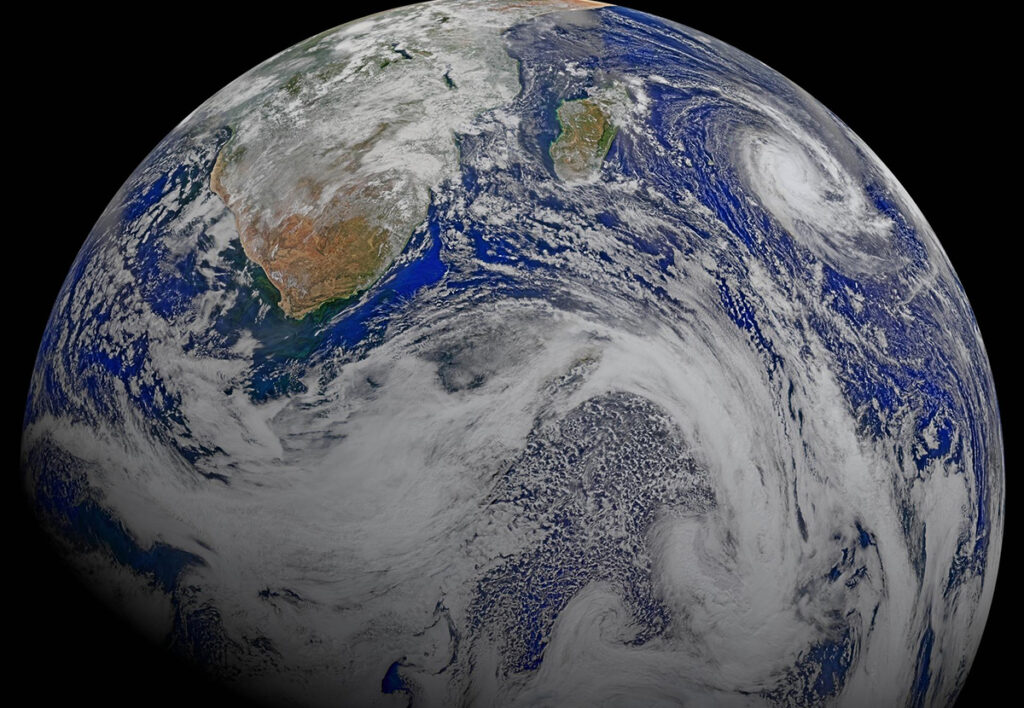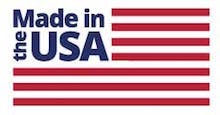See the original article by Kelly Hartog at specialtyfabricsreview.com
Explorers may not yet have achieved Buzz Lightyear’s ability to go “to infinity and beyond,” but with innovative aerospace technology we’ve already headed to the moon and low Earth orbit (LEO) and have sights set on Mars. The future of life beyond Earth continues to be rife with possibilities, with myriad space industries looking to eventually capitalize on space tourism.
Meanwhile, the industry continues to toil away, developing products from textiles that will make space travel not only simpler, safer and more effective but beneficial to us earthbound mortals.
Earthly applications
Shane McFarland is deputy lead for technology development on the advanced suit team at NASA’s Johnson Space Center. He says NASA has supported the development of many materials for space that are now used in other applications. “Contrary to public perception, Velcro® isn’t one of them,” he quips. He describes another interesting material, though. “[It’s] a flexible-formulation aerogel insulation. Aerogel is highly thermally insulative but historically very fragile.”
NASA funded development of flexible-formulation aerogel insulation batting for suits for future Mars missions, but, says McFarland, “The technology is now used in mountaineering gear, cold process piping, fire protection and as a sustainable building material in building energy-efficient structures.”
In the 1990s, NASA also pioneered Protective Coating for Ceramic Materials (PCCM), to improve the performance of the ceramic tiles used on spaceships to help reduce the ultrahigh temperatures when spacecraft returned to Earth. In 2001, Emisshield Inc. licensed the technology from NASA and while NASA no longer uses PCCM, today the company Trizar® Technology has taken on the Emisshield® technology and created a slew of energy-efficient apparel, from coats and jeans to gloves and tents.
“It is not at all uncommon for performance narrow fabrics to have crossover applicability in both directions—to and from aerospace,” says Eric Aerts, director of marketing research and development at OTEX Specialty Narrow Fabrics of Bernardsville, N.J. “Recently, a webbing we designed for crane slings, and also used for flood protection curtains, was adopted for a space travel application. If it’s right for the job, we have no qualms recommending existing designs for an appropriate alternative use.”
Going backward to move forward
We’ve certainly come a long way in aerospace design and technology since Neil Armstrong announced “one giant leap for mankind,” when he stepped out of Apollo 11 and onto the moon’s surface on July 20, 1969. Nonetheless, aeronautical textile designs are still very much rooted “in the basic desire to achieve greater performance, in what are sometimes unique and adverse conditions, with reductions in weight and size,” says Aerts. He explains such conditions require different fibers or materials, combinations of fibers, constructions, finishes and treatments, and manufacturing techniques. “Advanced textiles have reached the point—not only in aerospace but in many sectors—where they are replacing heavier, bulkier and rigid components,” he says.
Jason Smith is the customer solutions and business development lead at Aegis Aerospace Inc. of Houston, Texas. He says he has seen a growing interest in performing testing in the low Earth orbit and lunar environments from domestic and international companies, government agencies, and academia. This is being done, he says, “to better understand the effects of microgravity, radiation, thermocycling and harsh environments on metals, composites, polymers, ceramics, coatings and textiles. It also provides new opportunities for experimental and manufacturing studies in space.”
In addition, Smith notes that LEO testing is becoming more affordable and accessible using parabolic flights, rockets or balloons operated by private companies and universities. “Environmental research can also inform the development of future terrestrial-based technologies and space applications for interplanetary missions,” he says.
This may sound like science fiction, but it’s not. Aegis’ clients also use the company’s space-based laboratory, which is affixed to the International Space Station (ISS), to test advanced space suit materials, solar sails, crew garments, structures and coatings for vehicles, radiators, solar cells and other materials.
Scientists are exploring how aerogel, a translucent, Styrofoam-like material, could be used as a building material on Mars. Aerogel retains heat; structures built with it could raise temperatures enough to melt water ice on the Martian surface. Photo: NASA/JPL-Caltech
Over at NASA, the plan is to return permanently to the moon as part of the Artemis program, as a way to prepare for future missions to Mars. McFarland is an engineer in the Space Suit and Crew Survival Systems Branch and is responsible for supporting the development of new fabrics as well as selecting existing fabrics to meet specific requirements for a range of applications.
“A lot of our emphasis [in the Artemis program] is on outer shell fabrics that are strong and abrasion resistant to the harsh lunar dust [that] is known to quickly abrade most fabrics,” McFarland says. “We haven’t needed to contend with this dust since the Apollo lunar landings [from] 1969 to 1972, and there has been a lot of progress in materials over the past 50 years that we can take advantage of for new suits.”
NASA is also focused on clothing worn by the crew inside the lunar lander. “We want materials that are naturally antimicrobial, long lasting, comfortable and do not burn even in environments with 50% more oxygen than here on Earth,” McFarland explains.
To the moon … and Mars
“For everything on a Mars mission, cycle life is one of the biggest drivers,” McFarland says. “Volume and mass are at a premium, so we can’t send up a lot of spares. We need long-term durability and we need [textiles] to be easy to clean and maintain. Luckily, as we gain experience on the moon, we will be able to use that as a proving ground to verify that our hardware is up to the even more challenging task of Mars.”
Aerts and Smith are also excited about their companies’ involvement in these new ventures. “I’m happy we’re going back to the moon and looking further to Mars,” says Aerts. “The growth of commercial space travel is obviously a big focus now as well, and we hope to be a key supplier to that market as it develops.”
When it comes to the development and preparation for Mars, ISS and lunar textiles in the habitable volume of the spacecraft, “there really is no difference in everyday wearables,” says Smith. “The challenge is to develop clothes that last for months without washing. For external exploration, radiation protection is a big variable that we have assisted testing for. Once the crew leaves LEO, they are exposed to a much harsher environment.”
Aegis has also taken part in testing multiple materials for missions to the moon and Mars. “These materials will help keep the crew safe from various hazards as well as being used in their power generation and structural housing,” Smith says. “What is exciting about this is that some of the technologies developed for deep space applications will be able to be used terrestrially to benefit mankind and keep our nation’s status as an innovation leader.”
“Stronger, lighter, thinner”
Innovation is key when it comes to designing the best textiles possible. For OTEX, “It’s mostly about being stronger, lighter, thinner, more durable—fire, heat, UV, chemicals, etcetera,” says Aerts, “and reuse when it comes to the future of commercial space travel, exploration and logistics. Whether that means reusable equipment or retrieving equipment, we are receiving requests for products to assist in this area.”
He adds it’s OTEX’s business model to engineer and manufacture performance textiles. “We welcome our clients to challenge us with new or enhanced performance targets.” It’s why, he says, OTEX’s products and manufacturing techniques continue to develop and improve. He says that one of the company’s defense customers requested a fire-resistant (FR) elastic with embedded stretchable conductive lines (wires). “There is a trend in electronics to eliminate external wiring through the use of e-textiles,” Aerts says. “The problem is that conductive materials such as wires are generally not elastic.”
By collaborating with one of its suppliers, OTEX came up with a solution. “We can now offer a very versatile and stretchable FR elastic with multiple conductive lines embedded and hidden within,” says Aerts, adding it could have many useful applications, not just for the aerospace industry but also for the military, kinetic tracking/gaming and other industries.
Aegis is working on “space skins,” says Smith. “For decades, fabrics have been used as the outermost protective blanket on persistent space structures. This ‘spacecraft skin’ is ripe for large-area sensing. By weaving piezoelectric fiber sensors into this outer blanket, this skin can double as a ‘space dust telescope,’ detecting damage as well as characterizing very tiny cometary, and potentially even interstellar, objects of interest.”
McFarland notes that innovation also is about reinvention. “Despite the fact that the current suit, the Extravehicular Mobility Unit [EMU] at the International Space Station, is more than 40 years old, it has continually evolved,” he says. “The gloves have seen dozens of iterations, and the current glove is virtually unrecognizable compared to the original. The entire suit was enhanced to support on-orbit resizing at the International Space Station, and many designs have been tweaked to make the suit higher performing, more comfortable, safer and less work to maintain.”
In addition, the new suits for the ISS and the Artemis program have been redesigned from the ground up. “They will be more mobile and easier for the astronauts to use,” says McFarland. “They will have more inclusive sizing, ensuring that almost everyone will be able to fit regardless of anthropometry or gender.”
The next 10 years
Whatever the future holds beyond our terrestrial plane, those in the industry know that safety always comes first. “The quality management systems used to ensure and track the entire process of designing and producing aerospace textiles—AS9100D is the accepted and typically required standard—is as high a bar as you will find in any manufacturing sector,” says Aerts. “It’s a vital safeguard to maintain the best components and protect the safety of air and space travelers.”
The possibilities are vast, says McFarland. “NASA will also go to the south pole [of the moon], where we will be able to stay year-round and potentially find water ice, which we can use to generate fuel or provide to the crew to drink.” [Editor’s note: India landed a rover at the moon’s south pole in late August as we were preparing this issue for press.] He adds NASA is also using a new commercial services model to establish a market not only in LEO but also on the moon.
“We will see private companies landing science and exploration payloads on the moon,” McFarland states. “We’ll see the first woman and person of color on the surface of the moon and hopefully the beginnings of an established base at the lunar south pole, working in collaboration with international partners. All of this will happen this decade,” he says, “and it’s very exciting.”
Kelly Hartog is a freelance journalist in Los Angeles, Calif.



